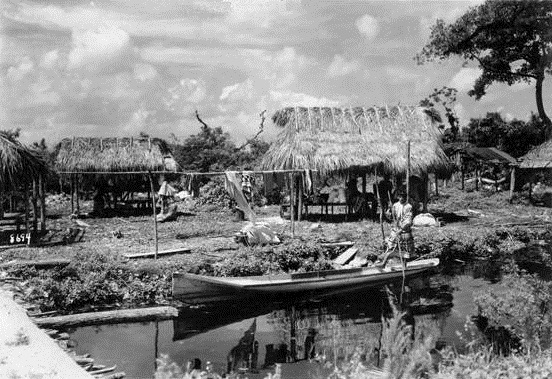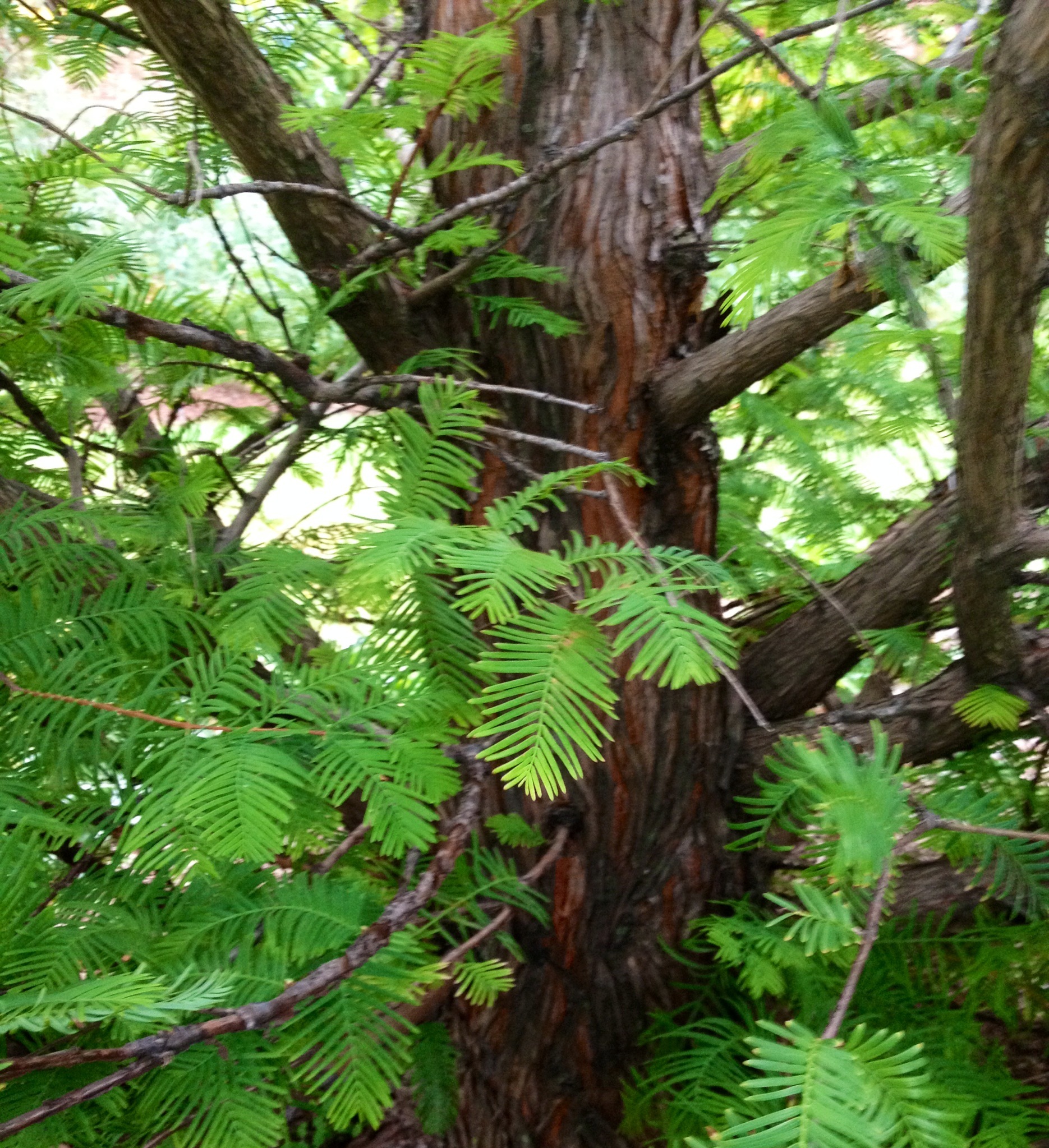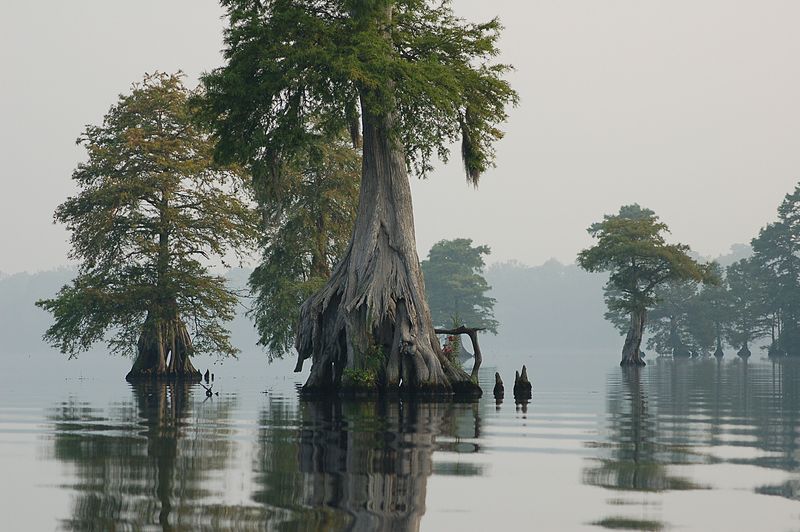Bald Cypress : Uses of the Bald Cypress
Wood
The Bald Cypress has a variety of uses; however, it has mostly provided wood over the course of American History. In 1869, Bald Cypress production rose from 29 million board feet to 1.1 billion board feet. However, production started to decrease in 1913 as many of the big old growth trees favored for wood use has already been used. The Bald Cypress’s heartwood is used for building. Specifically, it is used for building beams, posts, docks, warehouses, factories, bridges, and other various parts of heavy construction. Most of the lumber from the Bald Cypress goes into general millwork, containers, caskets, and burial boxes. The wood of the Bald Cypress is favored for its durability and water tightness, which is helpful when it is used in making the tanks, vats, and tubes for creameries, breweries, bakeries, dye works, distilleries, and soap factories.

A photograph of a Seminole man polling a dugout canoe. Many Native American tribes would make their dugout canoes with cypress wood. While there is no evidence to say that this is a cypress canoe, this image provides a visual as to what a cypress canoe would look like. (Claude Carson Matlack, June 13, 1928)
Native Uses
Native American tribes used the Bald Cypress mainly for its wood and fiber. Many of these cultures used the cypress to create dugout canoes. The Seminole were particualry famous for this use of the Bald Cypress, and one Seminole in particular was famous for his well crafted canoes. This man's name was Charlie Cypress. Charlie Cypress was a Mikasuki Seminole of the Otter Clan born in 1869 in a Seminole Village. When he was older he worked at the Seminole tourist village at Silver Spring between the 1930s and 1950s. It is probable that during this time he made a 23 foot long canoe that is now in the possesion of the Ah-Tah-Thi-Ki Museum located in Clewiston, Florida. Since canoe usage has dwindled due to the drainage of the everglades and addition of roads, less and less Seminoles have been participating in this art. However, more recently many of the tribes have begun to build canoes again as a way to connect to their heritage and bring Seminoles together. Other Native American cultures such as the Timucua, Seminole, and Mikosukee would use the wood the cypress to create fibers, houses, cooking tools, toys, drums, and ox bows, and the Choctaws would use the bark of the tree to make cordage.
Wildlife Ecosystems
Earth’s Ecosystems are extremely fragile, often one small alteration can completely change an ecosystem or even decimate it. In the swamps of Louisiana, the Bald Cypress is an important part of keeping a swamp’s ecosystem in check. The Bald Cypress can provide some means of water purification to the swamp. For example, the Bald Cypress has some ability to remove excess nitrates and phosphates, which cause algae blooms that cause oxygen levels to decrease from its environment. Since the bald cypress is so frequently used for wood, its presence in swamps has decreased. In order to get a swampy ecosystem back, the bald cypress can be reintroduced.
Art
The Bald Cypress is a beautiful tree. Its buttressed trunk is very pleasing to the eye, and its soft feathery needles add to the overall beauty of the tree. In addition, the way the Bald Cypress appears growing out of the water in swamps is very beautiful, yet can become somewhat spooky when being viewed at dawn or dusk. The bald cypress is a very beautiful tree that inspires many artists. In Henry Wadsworth Longfellow’s poem Evangeline, he writes about how the “towering and tenebrous boughs of the cypress met in a dusky arch, and trailing mosses in mid-air.”


